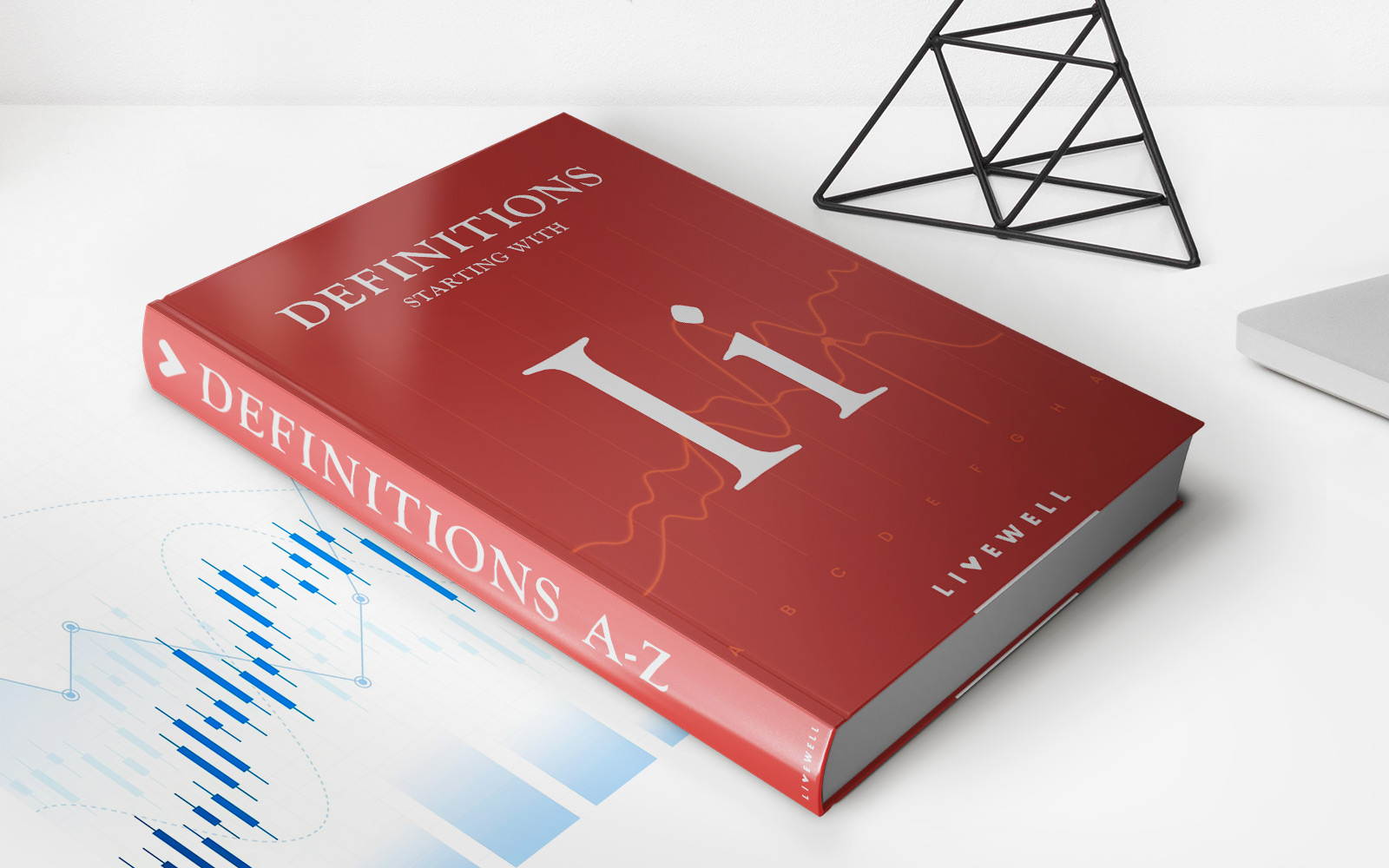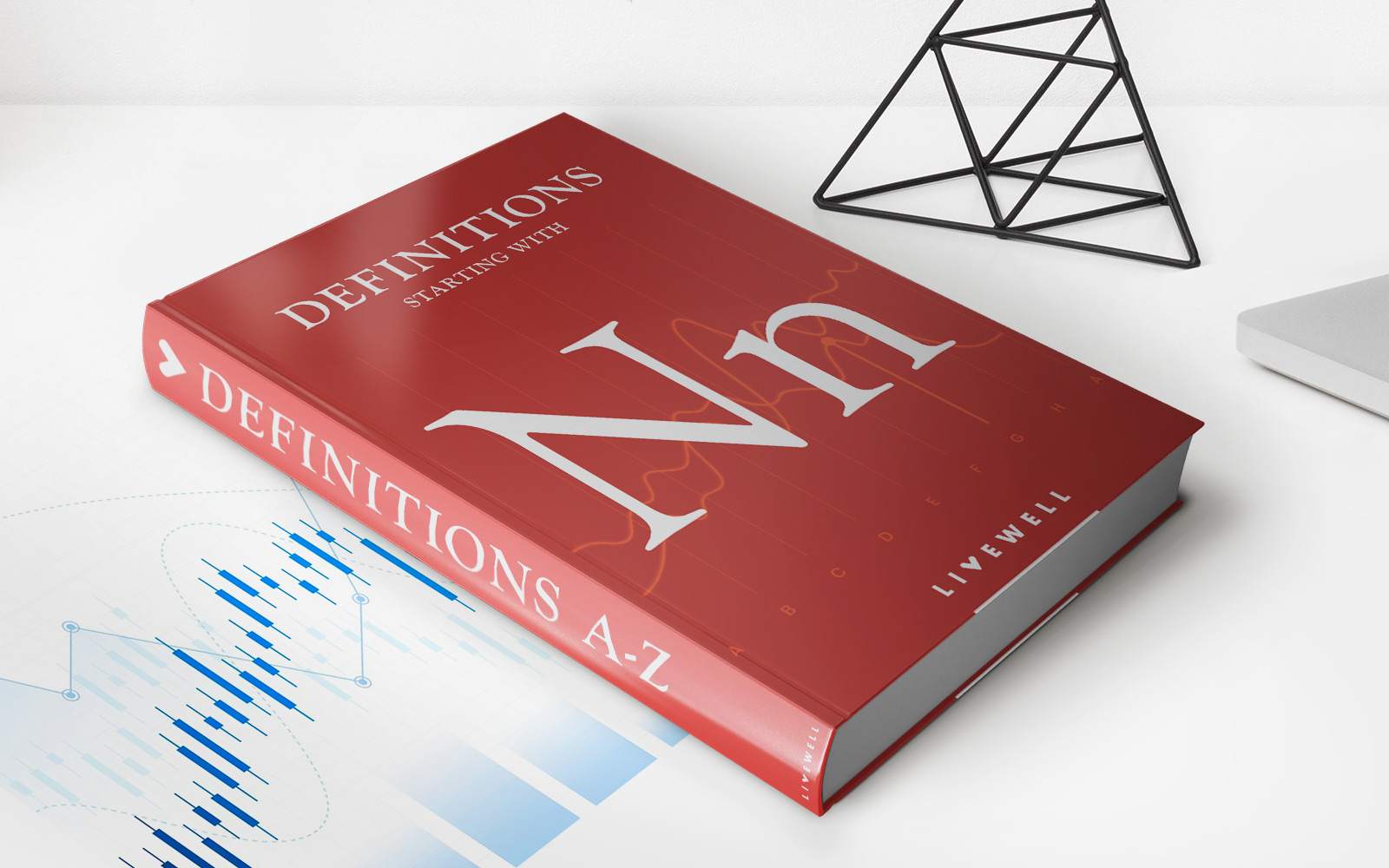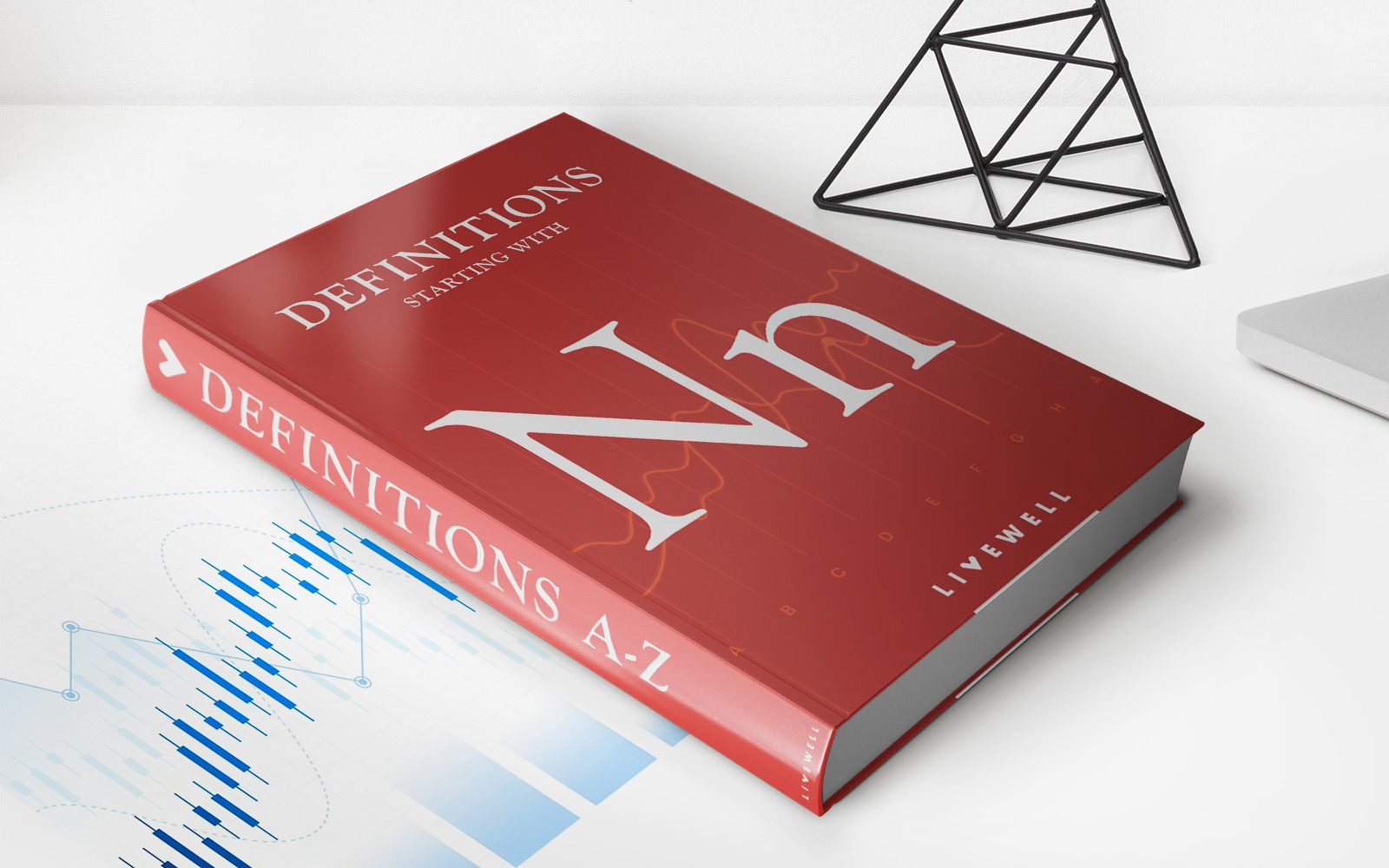Home>Finance>What Is The Difference Between Installment And Non-Installment Credit?


Finance
What Is The Difference Between Installment And Non-Installment Credit?
Modified: March 10, 2024
Learn the key distinctions between installment and non-installment credit in the world of finance. Understand the pros and cons of each to make informed financial decisions.
(Many of the links in this article redirect to a specific reviewed product. Your purchase of these products through affiliate links helps to generate commission for LiveWell, at no extra cost. Learn more)
Table of Contents
- Understanding the Difference Between Installment and Non-Installment Credit
- Definition of Installment Credit
- Definition of Non-Installment Credit
- Key Differences Between Installment and Non-Installment Credit
- Examples of Installment and Non-Installment Credit
- Pros and Cons of Installment and Non-Installment Credit
- Conclusion
Introduction
Understanding the Difference Between Installment and Non-Installment Credit
When it comes to managing personal finances, credit is a fundamental aspect that can significantly impact one's financial well-being. Understanding the various types of credit is crucial for making informed decisions and effectively managing financial resources. Two common forms of credit that individuals encounter are installment credit and non-installment credit. Each type serves distinct purposes and comes with its own set of advantages and considerations.
In this comprehensive guide, we will delve into the nuances of installment and non-installment credit, exploring their definitions, key differences, examples, as well as the potential pros and cons associated with each. By the end of this exploration, you will have a clear understanding of these two credit types, empowering you to make informed choices regarding your financial endeavors.
Whether you're considering a major purchase, navigating loan options, or simply aiming to enhance your financial literacy, grasping the disparity between installment and non-installment credit is essential. Let's embark on this insightful journey to unravel the intricacies of these credit mechanisms and gain valuable insights into their implications for your financial well-being.
Definition of Installment Credit
Installment credit is a type of loan that provides borrowers with a structured repayment plan, typically involving fixed monthly payments over a predetermined period. This form of credit is commonly utilized for significant purchases, such as real estate, automobiles, and higher education expenses. When individuals opt for installment credit, they agree to repay the borrowed amount, known as the principal, along with accrued interest, through a series of scheduled payments.
One of the defining characteristics of installment credit is the predetermined repayment schedule, which outlines the specific amounts due at regular intervals. These payments are designed to cover both the principal and the interest, ensuring a gradual reduction of the debt over the loan term. Additionally, installment credit often involves a fixed interest rate, providing borrowers with predictability and stability in managing their repayment obligations.
Furthermore, installment credit arrangements may encompass various loan structures, such as mortgages, personal loans, auto loans, and student loans. Each type of installment credit caters to distinct financial needs, offering borrowers the flexibility to select the most suitable option based on their circumstances and objectives. Whether it’s spreading out the cost of a major purchase or funding an essential investment, installment credit empowers individuals to access necessary funds while adhering to a structured repayment framework.
By embracing installment credit, borrowers can effectively manage their financial commitments by incorporating the loan payments into their budgeting strategy. This structured approach fosters financial discipline, enabling individuals to fulfill their obligations systematically and work towards the eventual satisfaction of the debt. Moreover, the transparent nature of installment credit, with its clearly delineated payment schedule and fixed terms, facilitates informed decision-making and prudent financial planning.
Definition of Non-Installment Credit
Non-installment credit, also known as revolving credit, represents a distinct category of borrowing that differs from the structured repayment framework associated with installment credit. Unlike installment credit, which involves fixed monthly payments over a specific period, non-installment credit provides borrowers with a revolving line of credit, allowing them to borrow funds up to a predetermined limit and make varying payments based on their outstanding balance.
One of the hallmark features of non-installment credit is its flexibility, as it enables individuals to access funds as needed, repay any portion of the borrowed amount, and subsequently utilize the available credit again. This revolving nature distinguishes non-installment credit from installment credit, offering a dynamic borrowing mechanism that aligns with the evolving financial requirements of borrowers.
Common examples of non-installment credit include credit cards, home equity lines of credit (HELOCs), and personal lines of credit. These financial instruments empower individuals to leverage pre-approved credit limits, make purchases, and repay the borrowed amounts on a flexible basis, subject to minimum payment requirements and interest charges on the outstanding balances.
Furthermore, non-installment credit often involves variable interest rates, which can fluctuate based on market conditions and other factors. This dynamic nature introduces a layer of complexity compared to the fixed interest rates typically associated with installment credit, necessitating a nuanced approach to managing the cost of borrowing and optimizing the utilization of available credit.
By embracing non-installment credit, borrowers gain access to a versatile financial tool that accommodates ongoing expenses, unforeseen emergencies, and discretionary purchases. The revolving nature of non-installment credit empowers individuals to navigate financial fluctuations and capitalize on opportunities, all while maintaining a degree of control over their repayment patterns and credit utilization.
Key Differences Between Installment and Non-Installment Credit
Understanding the disparities between installment and non-installment credit is crucial for individuals navigating the realm of borrowing and seeking to optimize their financial strategies. Several key distinctions set these two forms of credit apart, encompassing aspects of repayment structure, interest dynamics, borrowing flexibility, and suitability for diverse financial needs.
- Repayment Structure: The fundamental contrast between installment and non-installment credit lies in their repayment structures. Installment credit entails fixed monthly payments over a predetermined period, systematically reducing the outstanding balance until the debt is fully repaid. In contrast, non-installment credit provides a revolving line of credit, enabling borrowers to make varying payments based on their outstanding balance, with the flexibility to borrow and repay funds as needed.
- Interest Dynamics: Installment credit often features fixed interest rates, offering predictability and stability in managing repayment obligations. Conversely, non-installment credit may involve variable interest rates, subject to fluctuations based on market conditions and other factors, necessitating a nuanced approach to managing the cost of borrowing.
- Borrowing Flexibility: Non-installment credit, with its revolving nature, provides borrowers with the flexibility to access funds as needed, repay any portion of the borrowed amount, and subsequently utilize the available credit again. Installment credit, on the other hand, caters to specific loan purposes, such as major purchases or investments, with a structured repayment framework aligned to the loan term.
- Suitability for Diverse Financial Needs: Installment credit is well-suited for financing significant purchases or investments, providing a structured approach to managing specific loan obligations. Non-installment credit, with its dynamic borrowing mechanism, accommodates ongoing expenses, unforeseen emergencies, and discretionary purchases, offering versatility to address diverse financial needs.
These fundamental disparities underscore the distinct characteristics and implications of installment and non-installment credit, highlighting the importance of aligning the choice of credit with individual financial objectives and circumstances. By comprehending these key differences, individuals can make informed decisions regarding the most suitable credit type for their specific borrowing requirements and long-term financial goals.
Examples of Installment and Non-Installment Credit
Illustrating the application of installment and non-installment credit through real-world examples can elucidate their distinct characteristics and practical relevance in diverse financial scenarios.
- Installment Credit Examples:
1. Home Mortgage: A common example of installment credit is a home mortgage, where individuals secure a loan to purchase a property and repay the borrowed amount, along with accrued interest, through fixed monthly installments over an extended period, typically spanning 15 to 30 years.
2. Auto Loan: When individuals finance the purchase of a vehicle through an auto loan, they enter into an installment credit arrangement, committing to regular payments to gradually satisfy the loan balance and associated interest within a specified term, often ranging from three to seven years.
3. Student Loan: Student loans exemplify installment credit, enabling individuals to fund their education expenses through structured repayment plans, encompassing fixed monthly installments, to manage the borrowed amount and accrued interest over an extended period, typically extending beyond the academic years.
- Non-Installment Credit Examples:
1. Credit Cards: Credit cards represent a prevalent form of non-installment credit, offering users a revolving line of credit with the flexibility to make varying payments based on the outstanding balance, while also allowing for ongoing borrowing and repayment without a fixed repayment schedule.
2. Home Equity Line of Credit (HELOC): With a HELOC, homeowners can access a revolving line of credit based on the equity in their property, enabling them to borrow funds as needed, repay any portion of the borrowed amount, and utilize the available credit again without adhering to a structured installment repayment plan.
3. Personal Line of Credit: Individuals can leverage a personal line of credit, which provides a flexible borrowing mechanism, allowing them to access funds as required, make varying payments based on the outstanding balance, and replenish the available credit for ongoing financial needs, without the constraints of fixed installment payments.
These examples demonstrate how installment and non-installment credit manifest in various financial contexts, catering to distinct borrowing requirements and offering diverse repayment structures and borrowing dynamics to address individuals’ specific financial needs and aspirations.
Pros and Cons of Installment and Non-Installment Credit
Both installment and non-installment credit present unique advantages and considerations, shaping their suitability for diverse financial circumstances and goals. Understanding the pros and cons of each form of credit is essential for individuals seeking to make informed borrowing decisions aligned with their specific needs and preferences.
- Pros of Installment Credit:
Structured Repayment: Installment credit offers a structured repayment framework, enabling borrowers to systematically reduce their debt through fixed monthly payments, fostering financial discipline and accountability.
Predictable Interest Costs: With fixed interest rates, installment credit provides predictability in managing interest costs, allowing borrowers to budget effectively and plan for the long-term financial impact of the loan.
Specific Purpose Funding: Installment credit is well-suited for financing specific purposes, such as home purchases, vehicle acquisitions, and educational expenses, providing tailored loan options for targeted financial needs.
- Cons of Installment Credit:
Restricted Flexibility: The structured nature of installment credit may limit the flexibility to adjust repayment amounts based on evolving financial circumstances, potentially posing challenges during unexpected financial fluctuations.
Long-Term Commitment: Committing to a predetermined repayment schedule over an extended period necessitates a long-term financial obligation, which may not align with the preferences of individuals seeking more flexibility in their borrowing arrangements.
- Pros of Non-Installment Credit:
Borrowing Flexibility: Non-installment credit offers dynamic borrowing flexibility, allowing individuals to access funds as needed, make varying payments based on their outstanding balance, and leverage revolving credit for ongoing financial requirements.
Adaptive Repayment Options: With the freedom to adjust repayment amounts based on the outstanding balance, non-installment credit provides adaptability in managing financial obligations, accommodating changing budgetary considerations and unforeseen expenses.
Versatile Utilization: Non-installment credit caters to diverse financial needs, empowering individuals to address ongoing expenses, emergency situations, and discretionary purchases with a flexible borrowing mechanism.
- Cons of Non-Installment Credit:
Variable Interest Costs: The fluctuating nature of interest rates in non-installment credit introduces potential variability in borrowing costs, requiring careful monitoring and management to mitigate the impact of interest rate changes.
Impulsive Spending Risks: The accessibility and flexibility of non-installment credit may heighten the risk of impulsive spending and accumulating excessive debt, necessitating prudent financial discipline to avoid overextending credit utilization.
By weighing these pros and cons, individuals can discern the most suitable form of credit based on their financial objectives, risk tolerance, and preferences, enabling them to make informed decisions that align with their long-term financial well-being.
Conclusion
Exploring the nuances of installment and non-installment credit unveils the diverse landscape of borrowing options available to individuals seeking financial assistance. The distinct characteristics and implications of these two forms of credit underscore the importance of aligning borrowing decisions with specific financial needs, preferences, and long-term objectives.
Installment credit, with its structured repayment framework and tailored loan options for major purchases and investments, offers predictability and accountability in managing specific financial obligations. This form of credit fosters financial discipline and facilitates prudent planning, empowering borrowers to systematically reduce their debt while managing predictable interest costs over a predetermined period.
On the other hand, non-installment credit presents a dynamic borrowing mechanism, providing flexibility, adaptability, and versatility to address ongoing expenses, unforeseen emergencies, and discretionary purchases. The revolving nature of non-installment credit empowers individuals to access funds as needed, make varying payments based on outstanding balances, and leverage credit for diverse financial needs, albeit with potential variability in borrowing costs and the imperative of prudent financial discipline.
Ultimately, the choice between installment and non-installment credit hinges on individual financial circumstances, preferences, and risk tolerance. By comprehending the key differences, pros, and cons of these credit types, individuals can make informed decisions that align with their unique borrowing requirements and contribute to their long-term financial well-being.
Whether embarking on a home purchase, financing higher education, addressing ongoing expenses, or navigating unforeseen financial challenges, the discernment of installment and non-installment credit empowers individuals to leverage the most suitable borrowing options, enabling them to pursue their financial aspirations with clarity, confidence, and prudence.
Armed with this comprehensive understanding, individuals can navigate the realm of credit with informed decision-making, leveraging the appropriate form of credit to fulfill their financial needs and embark on a path towards sustainable financial prosperity.














